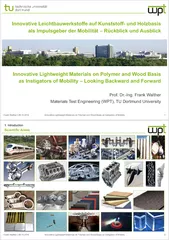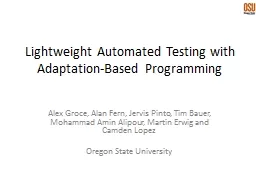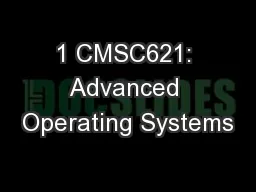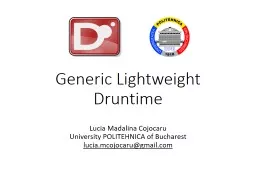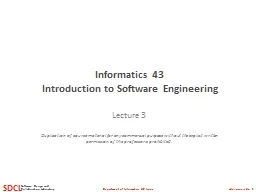PPT-Lightweight Remote Procedure Call
Author : tatyana-admore | Published Date : 2016-05-23
Brian N Bershad Thomas E Anderson Edward D Lazowska and Henry M Levy Presented by Alana Sweat Outline Introduction RPC refresher Monolithic OS vs microkernel
Presentation Embed Code
Download Presentation
Download Presentation The PPT/PDF document "Lightweight Remote Procedure Call" is the property of its rightful owner. Permission is granted to download and print the materials on this website for personal, non-commercial use only, and to display it on your personal computer provided you do not modify the materials and that you retain all copyright notices contained in the materials. By downloading content from our website, you accept the terms of this agreement.
Lightweight Remote Procedure Call: Transcript
Download Rules Of Document
"Lightweight Remote Procedure Call"The content belongs to its owner. You may download and print it for personal use, without modification, and keep all copyright notices. By downloading, you agree to these terms.
Related Documents


